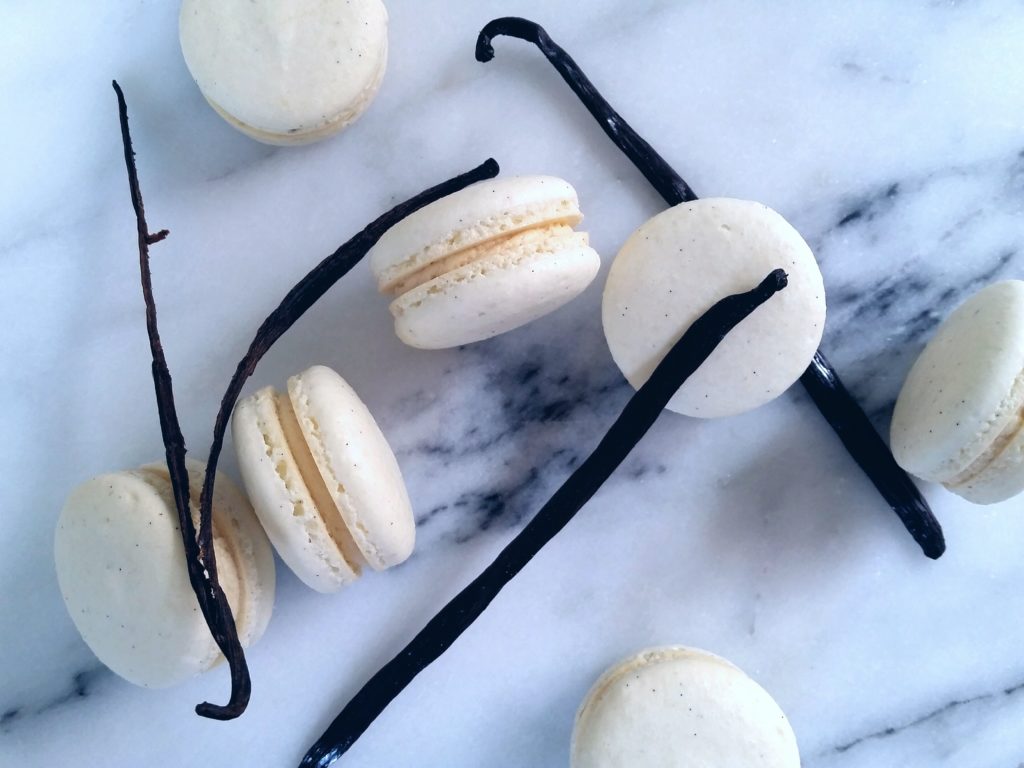 VANILLA BEAN MACARONS WITH CREAMY VANILLA ERMINE BUTTERCREAM.
VANILLA BEAN MACARONS WITH CREAMY VANILLA ERMINE BUTTERCREAM.
How vanilla became synonymous with boring and unexciting is a mystery to me. Used correctly, vanilla is an amazing, unique flavor that is the furthest thing from “default” you could get. After all, vanilla beans contain over 200 distinct chemical compounds. Vanillin is the most important by far, and the others help make the aroma nearly indescribable. So if you’re one of those people who judges vanilla from its use in commercial ice cream and limited edition cola, it’s time to give it a real try.
We always keep a healthy stock of vanilla extract from our favorite wholesale warehouse at our disposal, but we’re breaking out the vanilla beans for these vanilla macarons today. Other than decorating your shells with tons of tiny vanilla seed specks to let your friends know you used the real deal, you also don’t lose as much of the vanilla flavor with baking as you do with regular vanilla extract. With a smooth ermine buttercream with plenty of vanilla to fit the theme, these vanilla macarons are anything but boring! – Boo and Pea
P.S. If you haven’t made macarons before, read our quickie guide in our French Macaron blurb – it’s a lot less intimidating than some people make it seem, and we break it down into 3 main things to look out for!
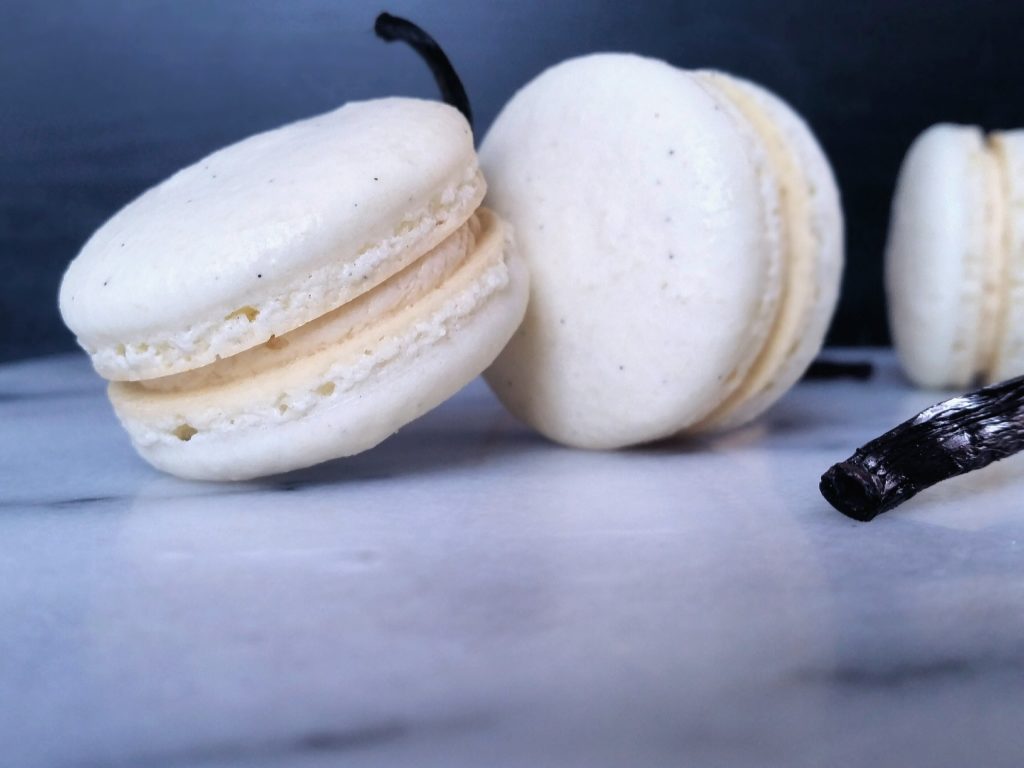
Yield: 44-56 macaron shells
Difficulty: ![]()
Oven: 310 F, 18 minutes
Preparation:
- Line 2-3 baking trays with parchment paper or silicone mats.
- If using parchment paper, optionally draw guide circles (diameter 2.5-3 cm) about 3 cm apart on parchment paper, and flip written-side down.
Macaron shells:
- Dry ingredients, sifted
120 g almond meal
150 g powdered sugar - Meringue
110 g (~3) egg whites, room temperature
0.25 ts cream of tartar (or lemon juice)
2 vanilla beans, split and scraped
100 g granulated sugar - (optional) 4-10 drops food coloring
- In a mixing bowl, beat egg whites with cream of tartar and vanilla bean seeds to soft peaks. Gradually add granulated sugar to egg whites while beating to a firm meringue (tips of peaks should gently curl when whisk is lifted), ~4-6 minutes.
- Sift dry ingredients into the meringue. Fold until smooth and falling in thick ribbons.
- Using a large round tip, pipe batter into buttons (diameter 2.5-3 cm) onto the prepared baking trays spaced ~3 cm between the edges of adjacent shells.
Small pea tip: Keep the tip ~0.5 cm above and perpendicular to the baking tray. Keep the tip centered and still while piping each shell to desired size. - Rest at room temperature until surface dries to the touch, 45-60 minutes.
- Bake on middle rack, 18 minutes. Remove from oven, and set side until cooled to room temperature. Meanwhile, make filling.
Small pea tip: Lower the oven temperature by 5-10 F, and bake for 1 minute shorter if using a dark pan. - Carefully remove/peel shells from parchment or silicone mat.
Small pea tip: If macarons stick to parchment or silicone mat, run a thin knife across the bottom to help release shells.
Vanilla ermine buttercream:
- Roux
0.25 c milk
1 tb flour
pinch of salt - 4 tb butter, room temperature
- 3 tb sugar
- 0.5 tb vanilla extract
- In a small saucepan over medium heat, stir and bring roux to a simmer, and cook, 2 minutes. Transfer to a small container, and cover and refrigerate until chilled.
- In a mixing bowl, cream butter with sugar and vanilla.
- Beat roux into butter mixture by spoonfuls, and beat until fluffy.
Assembly:
- Pair shells by size.
- Using a round tip, pipe ~0.5 tb filling onto one shell of each pair. Gently sandwich with second shell.
- In an airtight or covered container, refrigerate macarons in a single layer, at least 8 hours.
- Serve, and optionally refrigerate up to 1 week or freeze up to 3 months.
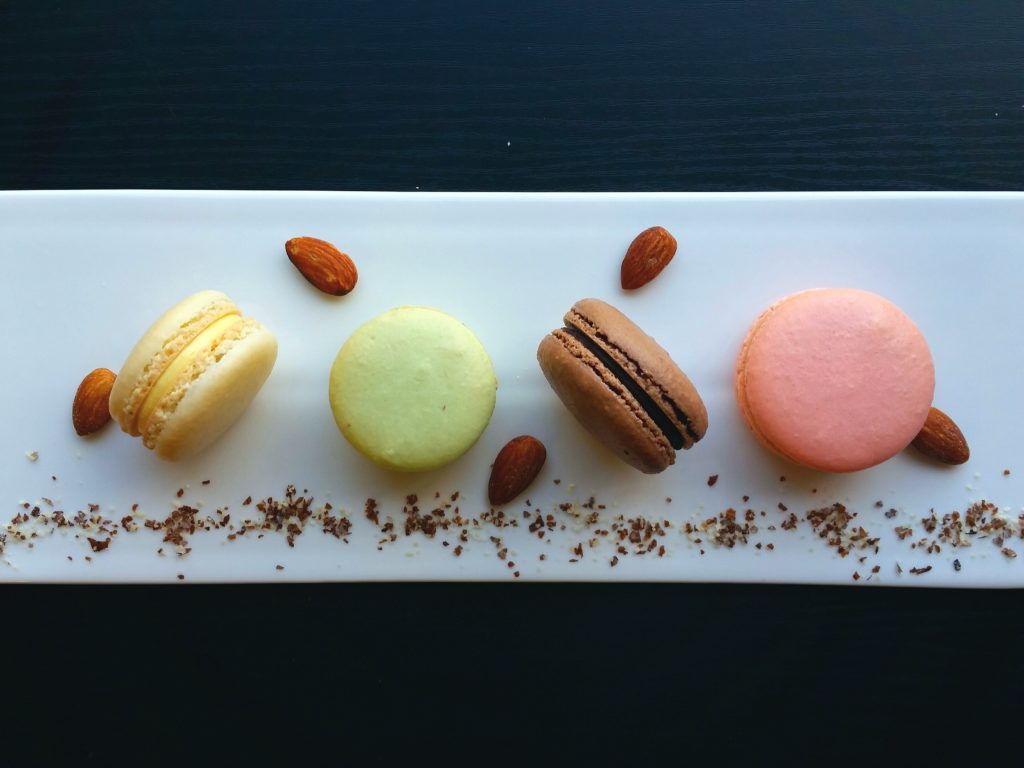
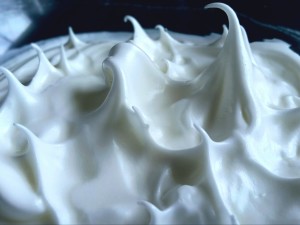

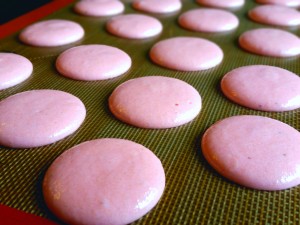
 Yield: 44-56 macaron shells
Yield: 44-56 macaron shells